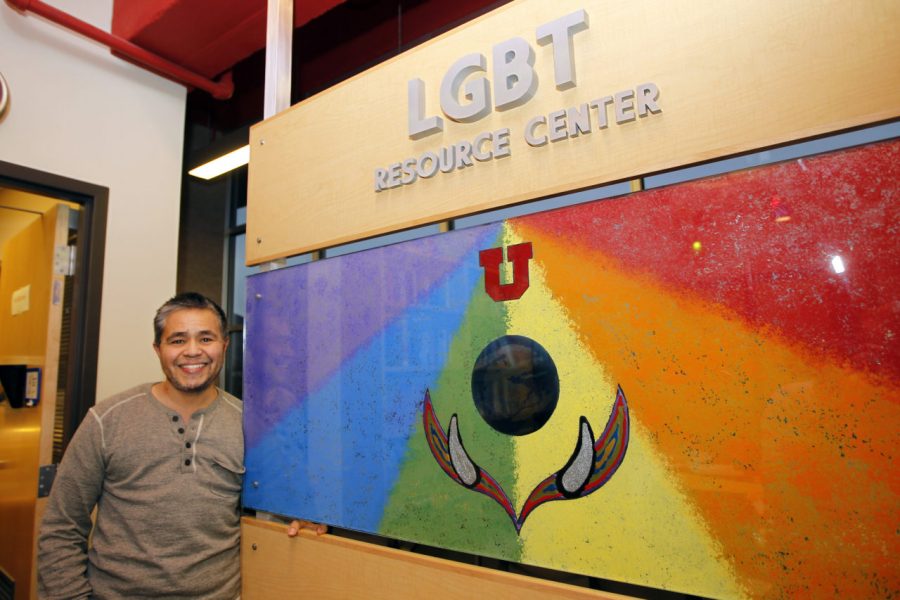Every February, grocery stores set aside an aisle for color-coded cards for “him” and for “her,” jewelers launch ad campaigns encouraging men to treat the women in their lives to a sparkling necklace and TV channels broadcast romantic comedies starring Meg Ryan. Anywhere consumers turn, the narrative that Valentine’s Day is for boyfriends and girlfriends, misters and missus, and other participants in heterosexual partnerships is perpetuated. The Valentine’s Day “his” and “hers” themed matching teddy bears and pajama sets seem to ignore the possibility of relationships that fall outside of those within the heteronormative dialogue and insist that the only genders that exist are male and female.
Valentine’s Day began as a Christian appropriation of the Roman holiday Lupercalia. Lupercalia was abolished by Pope Gelasius I in the fifth century. The first association of Valentine’s Day with romantic love was in the 14th century in Geoffrey Chaucer’s “Parlement of Foules,” a poem written to recognize the first anniversary of the engagement of King Richard II of England to Queen Anne of Bohemia. In the poem, Chaucer said, “For this was on St. Valentine’s Day, when every bride cometh there to choose his mate,” implying that Valentine’s Day was an established tradition.
The day has evolved to include the exchange of cards and gifts, making February a lucrative month for the greeting card, jewelry and floral industries. In 2013, the average American spent $131 for Valentine’s Day, a rise from $108 in 2010. The popularity of the annual celebration doesn’t seem to be decreasing.
“Valentine’s Day isn’t really a holiday; it’s more of a tradition,” said Kai Martinez, the director of the LGBTQ+ Resource Center at the University of Utah. “However, it’s very heteronormative. I personally don’t really pay attention to [Valentine’s Day], but others might.”
 Josh Jensen, a gay student at the U, hasn’t participated in Valentine’s Day since it was required in elementary school. “I see Valentine’s Day as a holiday that has become a capitalistic scheme to make money, rather than what the holiday was originally for,” Jensen said.
Josh Jensen, a gay student at the U, hasn’t participated in Valentine’s Day since it was required in elementary school. “I see Valentine’s Day as a holiday that has become a capitalistic scheme to make money, rather than what the holiday was originally for,” Jensen said.
Although Valentine’s Day is traditionally recognized as a day to celebrate love, many individuals don’t see the love that they feel represented.
“Until very recently, I had only seen Valentine’s Day depicted with straight couples,” said Jensen. “Growing up and only seeing straight couples makes you start to question if there’s something wrong with you. That’s one of the reasons why inclusivity is so important.”
 Another gay student at the U, Oliver Anderson, also struggled with the way he saw Valentine’s Day portrayed when he was growing up.
Another gay student at the U, Oliver Anderson, also struggled with the way he saw Valentine’s Day portrayed when he was growing up.
“I used to find Valentine’s Day gross or annoying,” said Anderson. “I believe this came from the spot in which I could not, until recently, celebrate this holiday publicly or comfortably. This of course is reinforced by the many commercials, the insane amounts of ‘him’ and ‘her’ gifts, and all of the gushy movies that come out around the big day, all upholding the heteronormative social norms of what ‘love’ is — between a man and a woman.”
For individuals that identify outside of the gender binary, this heteronormative depiction of Valentine’s Day presents other problems — not only does it exclude any potential relationships they might be involved in, it also dismisses the existence of their gender identity altogether.
 Maxton Cline is a bigender student at the U. They said that the celebration of Valentine’s Day has negative impacts on their emotional health.
Maxton Cline is a bigender student at the U. They said that the celebration of Valentine’s Day has negative impacts on their emotional health.
“I perceive Valentine’s Day as a huge piece of heteronormativity,” Cline said. “While having good intentions, it really pushes the norm of cis[gender] male and cis[gender] female romance. For instance, pretty much every movie and TV show’s portrayal of this day is between a cis[gender] man and cis[gender] woman. It makes me a little upset, especially because I feel like my ideal relationship is never shown onscreen.”
Despite the traditional focus on heterosexual couples comprised of cisgender men and women, some companies are working to change the narrative to be more inclusive. In January, Lush Cosmetics debuted Valentine’s Day ads depicting same-sex couples using the company’s bath products together. Greeting card company Hallmark featured a same-sex couple in their Valentine’s Day commercial for the third year in a row.
Even with these changes, the mental health of members of the LGBTQ+ community continues to be harmed by the products and media still dominated by heteronormative ideas.
“As society’s view of and comfortability with LGBTQ+ members progresses, I tend to be less critical of the day and what it traditionally represents,” said Anderson. “However, I still view this day as hostile and damaging for youth who are coming to terms either with how they identify or with whom they love. If the day is about love, yet LGBTQ+ are historically excluded, then what does this echo to our youth? That their love is not valid, true or important perhaps?”
Martinez, Jensen and Cline choose not to observe Valentine’s Day. Anderson, however, has decided that he will make Valentine’s Day work to fit his relationships, whether that means celebrating it or not.
“If those around me care deeply for Valentine’s Day and invite me to be a part of their celebration, then by all means, I will engage,” said Anderson. “I guess you can say that I have my own way of celebrating Valentine’s Day, but it does not sum up the way most folks see it. There’s no big fancy dinner, no large stuffed animal, no trashy box of chocolate. Instead, I just ensure that I have time put aside for my partner and I, and together, we will decide if or how we celebrate our relationship.”
@emilyinorgandy


















Joseph Poole • Apr 16, 2017 at 5:09 pm
Is there anything unique about the bond between a man and a woman? If so, aren’t we entitled to have a word to describe that unique bond and/or a holiday to celebrate that bond?
Jambes Marks • Feb 14, 2017 at 8:53 am
What a bunch of whiny drivel. These snowflakes are just unhappy nobody sent them a Valentine’s Day card.
Jambes Marks • Feb 14, 2017 at 8:53 am
What a bunch of whiny drivel. These snowflakes are just unhappy nobody sent them a Valentine’s Day card.